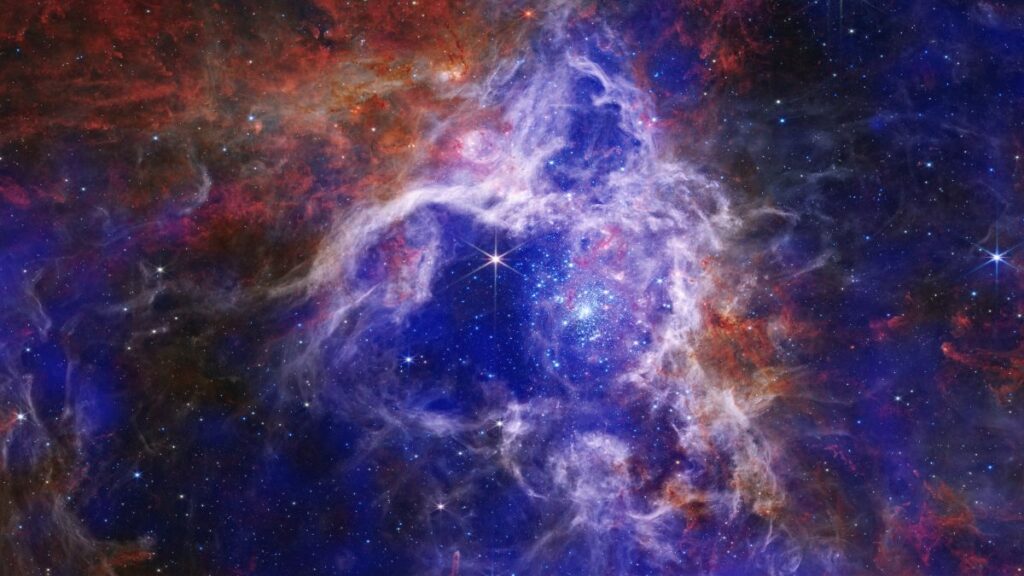
For the first time, astronomers have identified essential components of life in ice located beyond our galaxy. A team of researchers, led by astrophysicist Marta Sewiło from NASA’s Goddard Space Flight Center and the University of Maryland, discovered complex organic molecules encased in ice orbiting a young star in the Large Magellanic Cloud. Among these molecules are ethanol, acetaldehyde, and methyl formate, marking the first detection of such compounds in ice form outside the Milky Way. Additionally, acetic acid was detected in ice for the first time anywhere in space.
This groundbreaking discovery highlights the potential for life’s building blocks to exist throughout the universe, not just within our galaxy. According to Sewiło, “With this discovery, we’ve made significant advancements in understanding how complex chemistry emerges in the Universe and opening new possibilities for research into how life came to be.”
Significance of Complex Organic Molecules
Complex organic molecules (COMs) are defined as molecules containing at least six atoms, including at least one carbon atom. This category encompasses a range of compounds, such as ethanol (C2H5OH), methyl formate (HCOOCH3), and acetaldehyde (C2H4O). These molecules are vital because they serve as precursors to the fundamental components of life, including amino acids, sugars, and nucleobases.
Detecting these compounds in space can illuminate the origins of prebiotic chemistry and help scientists understand where these precursor materials might have formed before the existence of Earth. The research team is particularly interested in how the distribution of these molecules varies across different cosmic environments.
The Large Magellanic Cloud presents a unique setting for this study, as it has significantly lower heavy metal abundance compared to the Milky Way. This means that elements heavier than helium, such as oxygen and carbon, are less prevalent. The LMC also has less dust to obstruct light and experiences vigorous star formation that results in intense ultraviolet radiation.
Methodology and Future Research
One of the young stars investigated, named ST6, is located approximately 160,000 light-years from Earth within the superbubble N158, not far from the renowned Tarantula Nebula. The research team utilized the James Webb Space Telescope (JWST) to study the mid-infrared light emitted by the icy material surrounding ST6, enabling them to identify the various chemical compounds present.
The team compared the spectral data obtained from the JWST to a known “COM fingerprint” database, which contains the absorption signatures of various complex organic molecules. Their findings confirmed the presence of methanol, acetaldehyde, ethanol, methyl formate, and acetic acid (CH3COOH). Notably, before this detection, acetic acid had only been identified in vapor form in space.
The presence of these molecules in solid form corroborates existing computer models and laboratory experiments that suggest they participate in chemical reactions on the surfaces of grains of ice in space. The study indicates that these reactions can occur even in the challenging conditions of the LMC, characterized by low metal content and high radiation levels.
Looking ahead, the researchers aim to expand their investigations to include more young stars within the Large Magellanic Cloud. This will help determine whether the complex chemistry observed around ST6 is representative of the entire dwarf galaxy or if it is an outlier. Sewiło stated, “We currently only have one source in the Large Magellanic Cloud and only four sources with detection of these complex organic molecules in ices in the Milky Way. We need larger samples from both to confirm our initial results that indicate differences in COM abundances between these two galaxies.”
The findings of this research have been published in The Astrophysical Journal Letters, contributing valuable insights into the potential for life’s ingredients to be widespread throughout the cosmos.







